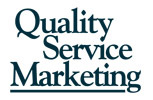With company e-mail dominating internal communications, staff meetings are becoming an endangered organizational activity. Yet managers and employees still need to get together to stay informed on what’s happening in the organization and how it impacts their work, including the opportunity to voice their concerns.
Why a staff briefing?
The purpose of periodic staff briefings is to keep employees connected and get them “on the same page.” It is not intended to focus on problem-solving or detailed planning. Here’s a sample meeting template that helps engage employees and minimize passive participation.
- An aerial view of what’s going on – share new top-down information such as organizational strategies, operational updates, policy changes, etc., including the rationale behind any changes or direction. Employees need to understand the “why” as well as the “what” of executive decisions in the context of the company’s mission and goals. Allow time to address employee questions and concerns.
- New business/project/program development – overview of any new initiatives that support and/or impact departmental goals, including who is involved so staff know who to contact with questions.
- Current projects/programs – employee share progress updates, results.
- Teachable moments – employees can take turns reporting on business topics of interest to the group or share lessons learned from a recent work-related situation.
- Wrap up/next steps – acknowledge employee participation; agree on any follow-up action items.
Food and face time
In a positive work environment, face-to-face staff briefings serve employees’ needs for information-sharing, learning, and connecting with each other. Consider providing food and/or beverage depending on what time the meeting is held. Refreshments can be a strong draw and serve to create a hospitable meeting environment, but they should not be the main attraction.
Email and other forms of digital communication are expedient and timely in keeping employees informed. However, face-to-face is better for periodic staff briefings because:
- people are wholly present (for the most part)
- there are fewer distractions in a focused meeting setting
- actual body language and tone of voice minimize misinterpretations
- feedback and clarification are immediate.
“Nothing replaces being in the same room, face-to-face, breathing the same air and reading and feeling each other’s micro-expressions.” Peter Guber
[Source: Peter Guber. BrainyQuote.com, Xplore Inc, 2015. http://www.brainyquote.com/quotes/authors/p/peter_guber.html, accessed April 7, 2015.
Read more at http://www.brainyquote.com/citation/quotes/authors/p/peter_guber.html#Ksbj93R6pceeLx7o.99]









